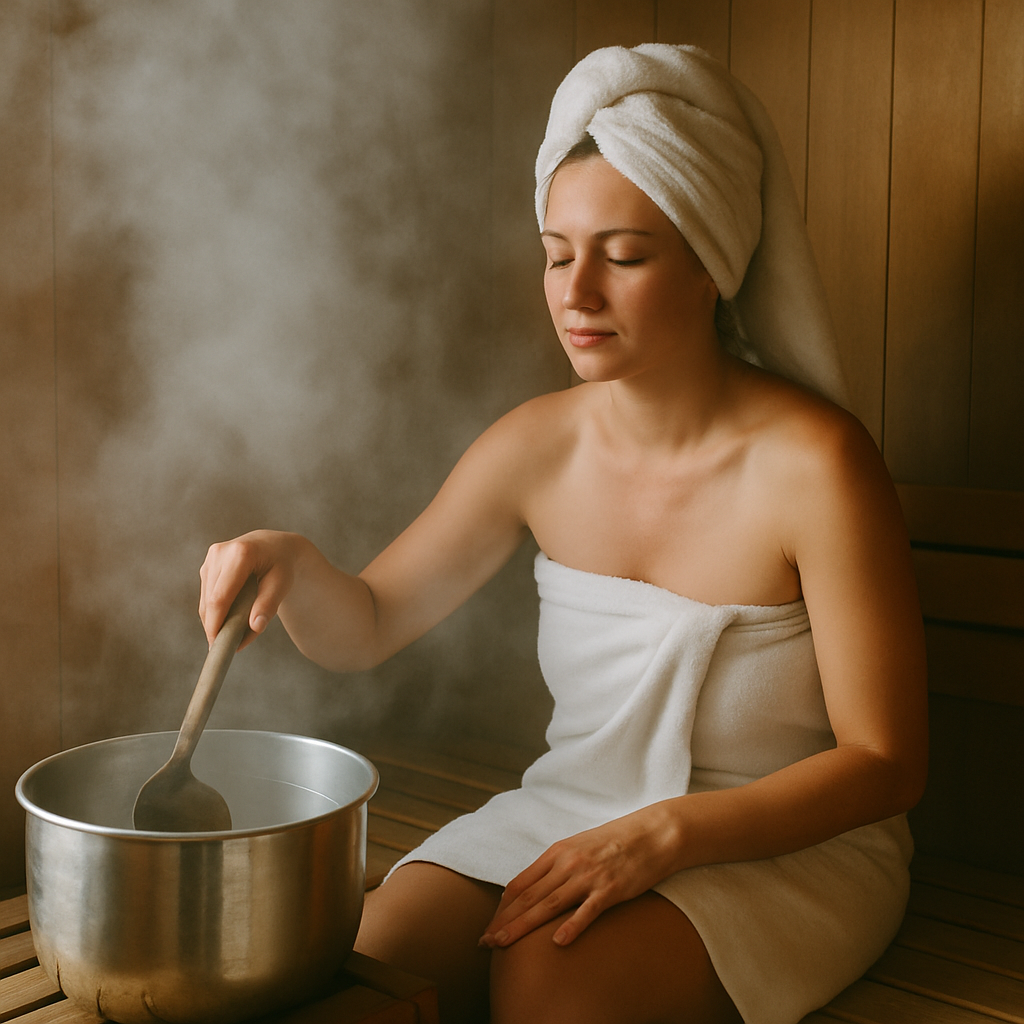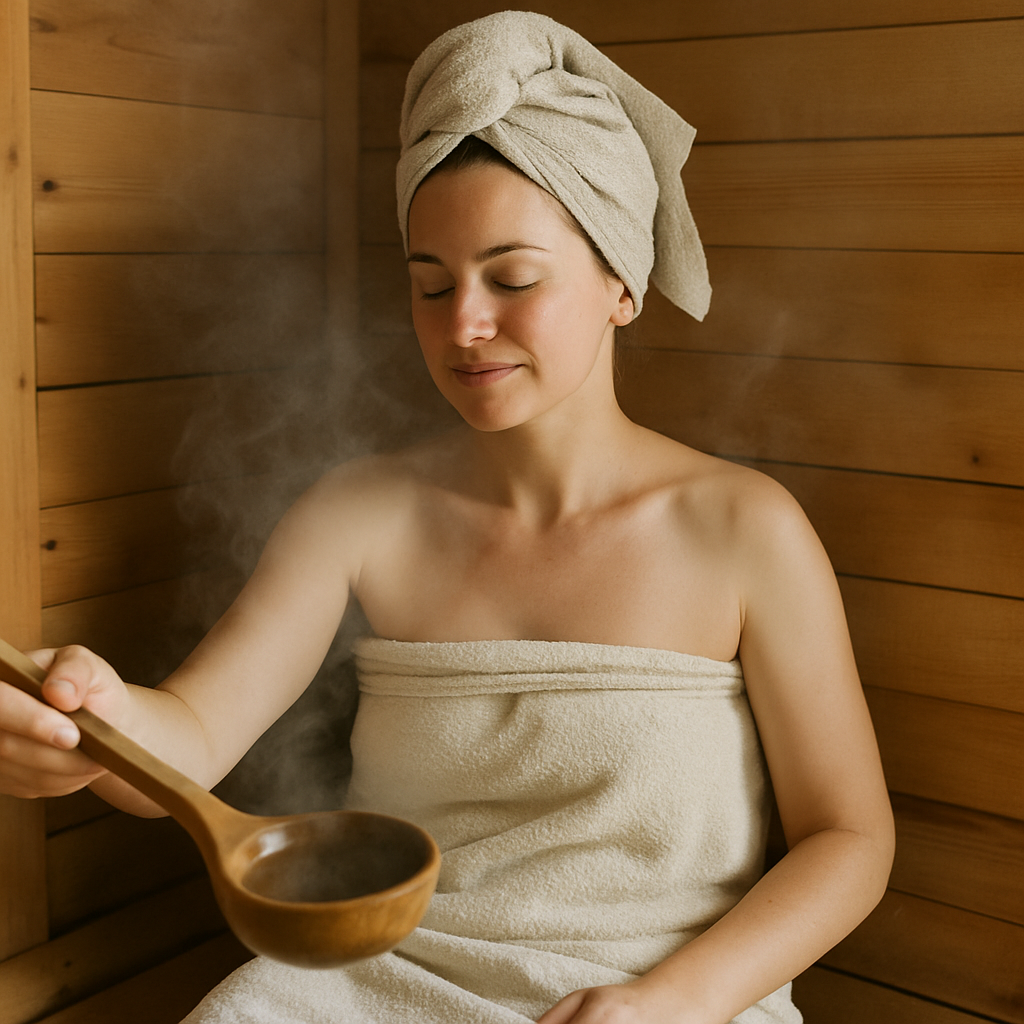Shop Now in Our Store
How to Take Steam Bath at Home: Ayurvedic Guide to Detox and Relaxation

Ever felt like you just need to hit the pause button, sweat it out, and let your whole body breathe again? That’s exactly what a good steam bath can do—right from the comfort of your home. Whether you're curious about how to take steam bath at home for the first time, or you've been wondering about the herbal bath powder at home ingredients that your grandma swore by, this guide is for you. We’re diving into the soothing world of Ayurvedic steam, and yes, you’ll even learn how to make steam bath at home without needing a fancy spa setup.
By the time you finish reading this, you’ll know how to steam bath at home like a pro—from setup to herbal touches to those after-steam rituals that make all the difference. Plus, we’ll show you how to make natural bath powder at home, because why not keep it 100% natural and DIY?

What Is a Steam Bath and Its Benefits in Ayurveda
Ayurvedic Concept of Swedana (Therapeutic Sweating)
In Ayurveda, steam therapy is known as Swedana, which literally means to sweat. This ancient practice has been used for centuries to eliminate toxins (or ama) from the body. It’s considered a vital part of detox routines and is often paired with Abhyanga, the warm oil massage that precedes it.
Swedana helps open up the srotas (body channels), improves circulation, and balances the doshas—Vata, Pitta, and Kapha. Ayurvedic practitioners recommend it to relieve stiffness, enhance skin glow, and support respiratory health. Kinda cool that something so old is still so relevent, right?
Benefits of Steam Bath at Home
You don’t need a five-star spa to get the benefits. Doing a steam bath at home can:
-
Promote detoxification through sweat
-
Relieve stress and calm the nervous system
-
Loosen up tight muscles and joints
-
Improve skin clarity and softness
-
Support respiratory health, especially when herbs are added
It’s like hitting refresh, but for your whole body.
When and How Often to Do Steam Baths at Home
Ideally, a steam bath can be taken 2–3 times a week, depending on your body constitution. For those with a dominant Pitta dosha (think fiery personalities), once or twice may be enough to avoid overheating. Winters are an excellent time to incorporate steam baths more regularly.
Timing-wise, go for the morning or evening—never immediately after meals. Your stomach’s working hard, let it chill. Also, it’s better to do it on a day when you can relax afterward (so maybe not before back-to-back Zoom calls, okay?).

How to Take a Steam Bath at Home Step-by-Step
How to Make Steam Bath at Home with Basic Tools
So, here’s the million-rupee question: how to make a steam bath at home without buying a big sauna box? You’d be surprised how simple it is.
What you need:
-
A small steam inhaler or facial steamer
-
A large bucket of boiling water
-
A thick bedsheet or towel
-
A comfortable stool or chair
-
Optional: herbal decoctions (we’ll get to that soon)
Steps:
-
Place the boiling water bucket in a small bathroom or closed-off space.
-
Sit comfortably, keeping the bucket near your legs or feet.
-
Drape the towel or sheet over your body to trap the steam.
-
Stay in the steam for 10–15 mins, or until you start sweating.
Be careful, though—not too hot. You’re not a dumpling 😅
Steam Bath Setup at Home Using Herbal Decoctions
Want to go the extra Ayurvedic mile? Add herbs like neem, turmeric, eucalyptus, or tulsi to the boiling water. These herbs enhance detoxification and add a relaxing aroma to your steam bath setup at home.
Add the herbs to the water and let them steep for 5–10 minutes before you start. It’s basically herbal therapy and skin treatment rolled into one.
Safety Tips and Precautions Before and After the Steam
Some quick pointers you really shouldn’t skip:
-
Don’t steam if you have fever, sunburn, or are pregnant (talk to a doc first)
-
Hydrate before and after (srsly, drink that water)
-
Avoid cold drafts immediately after steaming
-
Wait at least 30 mins before showering or eating
And yeah, don’t do it every day. Even good things need moderation.

How to Use Herbal Bath Powders and Ingredients at Home
Herbal Bath Powder at Home: Ingredients and Preparation
After your steam session, your pores are open, your skin is soft, and your body’s kinda like a sponge ready to soak in all the goodness. This is the perfect moment to bring in a homemade herbal bath powder. Forget those store-bought scrubs with twenty unpronounceable ingredients—you can whip up a super effective and natural version with things from your kitchen or local Ayurvedic store.
Basic ingredients for bath powder at home:
-
Green gram (moong dal) – exfoliates and brightens skin
-
Sandalwood powder – cools and calms inflammation
-
Vetiver root – natural fragrance, anti-bacterial
-
Turmeric – well-known anti-inflammatory and glow-booster
-
Neem leaves (dried & powdered) – deep cleanses and fights acne
-
Rose petals – adds aroma and softens skin
Just grind these into a fine powder (use a dry grinder or blender). Store in an air-tight jar. You’ve now got your very own herbal bath powder at home ready to go!
How to Make Natural Bath Powder at Home for Skin Rejuvenation
To make it really effective, you can tailor your herbal bath powder to your skin type:
-
Oily skin? Add fuller’s earth (Multani mitti).
-
Dry skin? Add a spoon of milk powder or almond flour.
-
Sensitive skin? Go easy on turmeric and focus more on soothing herbs like rose and sandalwood.
Mix the powder with rose water, milk, or just plain water before use. It should be a thick paste—kind of like face mask texture. Apply this all over your body after steam, wait 5-7 minutes, and gently scrub it off while rinsing.
Not only does this cleanse your skin, but it also restores moisture balance and enhances that post-steam glow. It’s like you’re treating yourself to an Ayurvedic spa day right in your shower stall. No lie.
How to Use Bath Powder After Steam for Maximum Effect
Here’s the flow most folks miss: timing matters.
Right after your steam bath at home, your skin is super absorbent. So instead of jumping into a shower with soap (which can be harsh right then), apply your natural bath powder all over and let it sit for a bit.
Rinse it off gently with lukewarm or slightly cool water—not hot! The idea is to close your pores slowly and lock in the benefits of both the steam and the herbs.
Bonus tip? Don’t use soap at all on these days. The herbal powder cleanses without stripping natural oils. Plus, you’ll smell kinda amazing without those synthetic fragrances.

Ayurvedic Rituals Before and After Steam Bath
Abhyanga (Oil Massage) Before Steam Bath
Ask any Ayurvedic therapist and they’ll tell you: don’t skip Abhyanga. This is the full-body warm oil massage you do before stepping into the steam. It’s not just for luxury—there’s a whole science behind it.
Sesame oil is commonly used, especially in winter. For Pitta types (who run hot), coconut oil is cooling and better suited.
Warm the oil slightly, apply generously all over your body, and massage using circular motions on joints and long strokes on limbs. This not only lubricates the tissues but also loosens up toxins to be eliminated during the steam.
It also kinda makes you feel like royalty tbh.
Rest, Hydration, and Cooling After Sweating
Post-steam, your body’s been through a lot! You’ve detoxed, scrubbed, and pampered your skin. Now it’s time to cool down slowly, not abruptly.
-
Sip warm water or herbal tea (coriander or cumin is great)
-
Sit quietly or lie down for at least 15–30 minutes
-
Avoid screens and noise—your nervous system needs the break
-
Take a gentle shower with lukewarm or room-temp water
It’s tempting to check your phone right after, but resist the urge. Just breathe. Let your body fully absorb the benefits of your steam bath setup at home.
Conclusion
Doing a steam bath at home isn’t just about sweating out stress (though that part’s awesome too). It’s a full-on Ayurvedic ritual that nourishes your mind, body, and skin when done right. From learning how to make a steam bath at home to whipping up your own herbal bath powder at home ingredients, you’ve now got the tools to turn your bathroom into a healing sanctuary.
What makes this practice so special isn’t just the detox or the glow—it’s the intention behind it. When you carve out 30–60 minutes for yourself, you’re telling your body and brain: “Hey, you matter.” That’s powerful stuff. Especially in a world where we're often running on fumes.
So next time you're craving a reset, skip the scroll and go steam instead.
Feel like this could help a friend? Share this guide! Self-care isn’t meant to be kept secret.
FAQs
How to make a steam bath at home without special equipment?
You don’t need fancy machines. A bucket of boiling water, a closed bathroom, a chair, and a thick sheet can do the trick. Sit close to the steam source (but not too close—don’t burn yourself, pls), drape the sheet over your body to trap the steam, and enjoy for 10–15 minutes.
Want to level it up? Add herbs like tulsi, eucalyptus, or even kitchen stuff like turmeric to the water.
What are the best herbs or oils for steam bath in Ayurveda?
Great Q! Here are some classic Ayurvedic go-tos:
-
Neem: great for skin cleansing, especially acne-prone
-
Eucalyptus: opens sinuses, clears lungs
-
Tulsi (Holy Basil): balances kapha, great for immunity
-
Turmeric: anti-inflammatory, skin-friendly
-
Vetiver: calming and grounding
-
Sandalwood: cooling, especially for pitta types
As for oils, use sesame oil for general body types and coconut oil if you tend to overheat or live in a hot climate. Massage it in before steaming as part of your Abhyanga.
How long should a steam bath session last?
Most steam baths should last between 10 to 20 minutes, depending on your body’s tolerance. If you're new to it, start with just 7–10 minutes and build from there.
Don't go overboard. Too long can cause dizziness, dehydration, or fatigue. Remember: It’s about balance, not punishment.
Also, if you feel dizzy, too hot, or just off—stop immediately. This is your body saying “yo, enough.”
Final Thoughts (and a Little Nudge)
Ayurveda isn’t just ancient mumbo jumbo. It’s a practical, deeply intuitive way of taking care of yourself. And by learning how to do steam bath at home, crafting your own bath powder at home, and understanding when and how to use it all—you’re taking charge of your well-being in a really grounded, natural way.
If this guide helped you, why not bookmark it or share it with someone who could use a little detox and chill? You deserve to feel amazing in your own skin. And honestly? A little sweat and herbal dust can go a long way 😌
This article is checked by the current qualified Dr Sujal Patil and can be considered a reliable source of information for users of the site.
Got any more questions?
Ask Ayurvedic doctor a question and get a consultation online on the problem of your concern in a free or paid mode.
More than 2,000 experienced doctors work and wait for your questions on our site and help users to solve their health problems every day.

